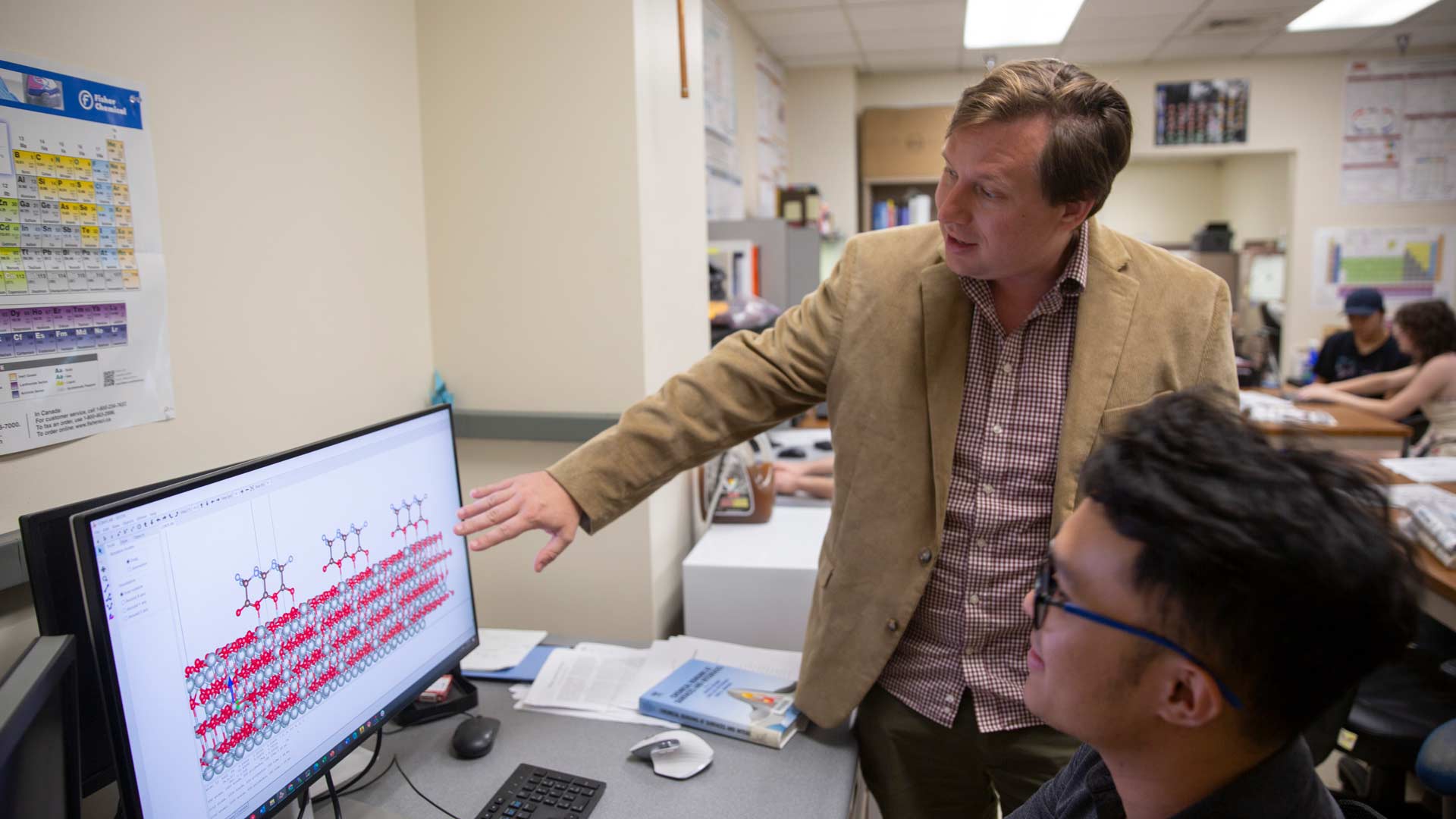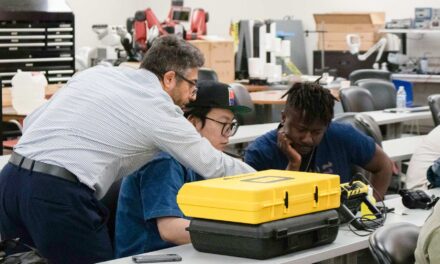
Overcoming the downside of forever chemicals
Research project aims to reduce persistently problematic sources of contamination

In the realm of chemicals and materials, perfluoroalkyl and polyfluoroalkyl substances, or PFAS, present one of the most dramatic contrasts between the value of what they are good at doing and the dangers they can present.
“PFAS materials are almost indestructible, which makes them exceptionally effective in ways that benefit us. But that is also why they’ve become a widespread threat to our health,” says Christopher Muhich, an assistant professor of chemical engineering in the School for Engineering of Matter, Transport and Energy, part of the Ira A. Fulton Schools of Engineering at Arizona State University.
These materials are commonly called forever chemicals because of their extraordinary resilience. For that reason, they are optimal for making materials waterproof, fire-retardant, decay resistant and difficult to break.
Their long-lasting properties also mean once they get into the environment — from fighting fires, leaching out of waste disposal sites or flowing into the air or water from industrial processes — they stay there.
“They have worked well for so many things, but then it turned out these substances that have been accumulating in our environment for about 50 years could also kill us,” Muhich says. “They are now ubiquitous. They are in our homes, our water, our blood and the air we breathe.”
It’s why Muhich and others in his areas of expertise are now being enlisted to enable science and engineering advances that will neutralize the threat to human and environmental health from PFAS.
Building defenses against destructive materials
His lab has recently been awarded support from the National Alliance for Water Innovation to develop a process industries and municipalities can use to break down organic compounds — including PFAS, antibiotics and byproducts of chlorination systems and the like — through highly selective capture and elimination of these materials in these compounds.
The U.S. Environmental Protection Agency and Food and Drug Administration have specific interests in such endeavors because of their plans to regulate the use of these substances in water systems.
“The amounts of these substances that are going to be acceptable is miniscule,” Muhich says. “So, it’s going to be a big challenge.”
He adds that stringent regulatory restraints are justified.
“PFAS are considered to be endocrine disruptors. They can disrupt hormonal flow through your system, through your body’s signaling pathways, and they can lead to cancer,” Muhich says. “They can damage the liver and the immune system, cause low birth weights, birth defects, developmental delays, infertility and many other undesirable health outcomes.”
Success in significantly mitigating the threats of forever chemicals will require painstaking efforts in combining research strides in chemistry and materials science, chemical and environmental engineering and related technical fields at both macro and micro scales, says Paul Westerhoff, an ASU Regents Professor in the School of Sustainable Engineering and the Built Environment, part of the Fulton Schools, and the Fulton Chair of Environmental Engineering.
“It’s all very technically complex and expensive, and there are always risks of unintended consequences when transforming pollutants to hopefully less harmful byproducts,” Westerhoff says. “But this fundamental research is urgent. We need to do this, or we will face bigger problems.”
Applying tech innovation to alleviating dangers
Muhich says a sustainable solution will require more than the traditional approach of extracting, sequestering and locking up the dangerous substances.
“Instead, we are trying to use electricity to decompose these threatening chemical compounds,” Muhich says. “It’s called electric catalysis. We use electricity and metals with specific properties that can break down the chemical bonds of the targeted substances.”
Muhich and his team foresee making advances in materials and catalytic science that will help to prevent the corrosion of materials and increase the stability of the chemical processes involved in water reclamation and desalination efforts.
The project will involve activating mechanisms and processes at molecular and atomic levels using palladium, a metal found in many products and in catalytic converters.
The hope is that this approach will provide ways to reduce or prevent PFAS contaminants from accumulating in the environment and in animals and people.
These substances are now common in waste storage and waste treatment sites, manufacturing and other industrial sites. Airports and military bases are also a major source of PFAS contaminants, as are a long list of common consumer goods, including cosmetics, cookware and food.
Developing tools to defuse contaminants
Muhich is confident about being able to contribute to a deeper understanding of the fundamental characteristics of PFAS, learning how to reduce or eliminate their toxicity and preventing their overwhelming accumulation.
“We are using supercomputers to do advanced computational chemistry to understand how atoms interact with each other on catalytic surfaces, how they transport electrons back and forth, and how they atoms bind to each other,” Muhich says.
“If we can understand that, then we will know how to facilitate the breaking of the carbon-fluorine bonds that hold PFAS together. Once you do that the molecules are much less toxic,” Muhich says. “This also gives us a location that can be a target for natural bacteria to attack the rest of the PFAS molecules.”
The ultimate goal of the three-year project is to enable a lab demonstration of a complete device that can execute a complete destruction of PFAS molecules, Muhich says, and to provide a road map to an economical deployment of the device in the decontamination field.
The project will also provide research experiences for both graduate and undergraduate students.
“Key ideas behind this research are related to the foundations of what is taught in our core chemical engineering courses, especially in areas of reaction engineering and reaction kinetics,” Muhich says.
“We are excited about creating an opportunity to teach undergraduates not only the methods of electrical catalysis,” Muhich says, “but also how to think about engineering reactions in water environments, which involve various aspects that are often ignored in reaction engineering.”


































